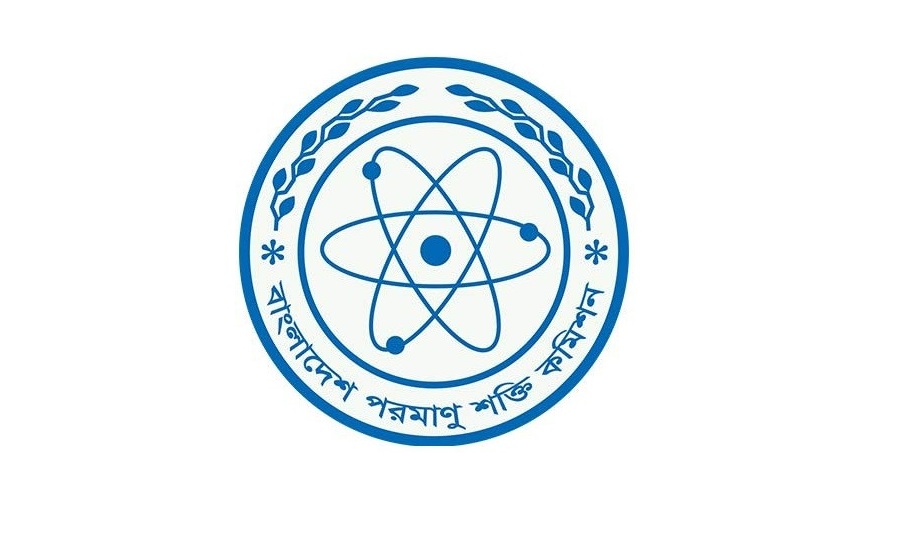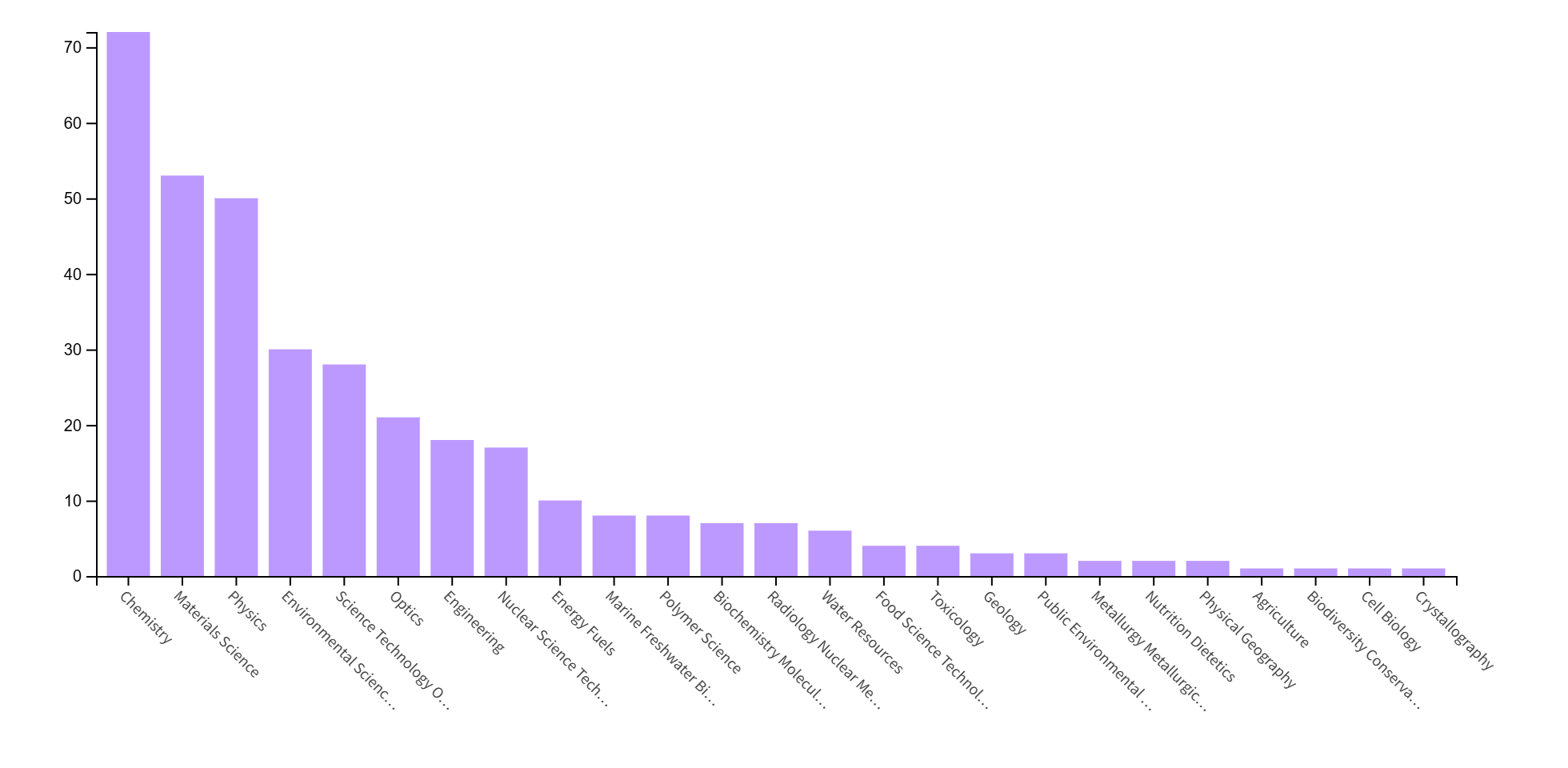In 2024, research affiliated with the Bangladesh Atomic Energy Commission (BAEC) made a strong impression in the global scientific landscape, spanning a wide spectrum of disciplines and publishing platforms. The bulk of contributions centered around materials science, chemistry, environmental science, physics, and nuclear technology, reflecting BAEC’s multidisciplinary approach. Researchers published mostly original articles, with substantial international collaboration involving countries like Saudi Arabia, India, Japan, South Korea, and China. Leading the charge was Hossain M. Khalid, who had a notable share of the total publications. Most of these articles appeared in journals indexed under the Science Citation Index Expanded and were published by major names like Elsevier, Springer Nature, and the Royal Society of Chemistry. The research targeted scientific progress and aligned with Sustainable Development Goals, making BAEC a key player in advancing knowledge across domains. Web of Science
The leading areas of research publication categories in the TreeMap:
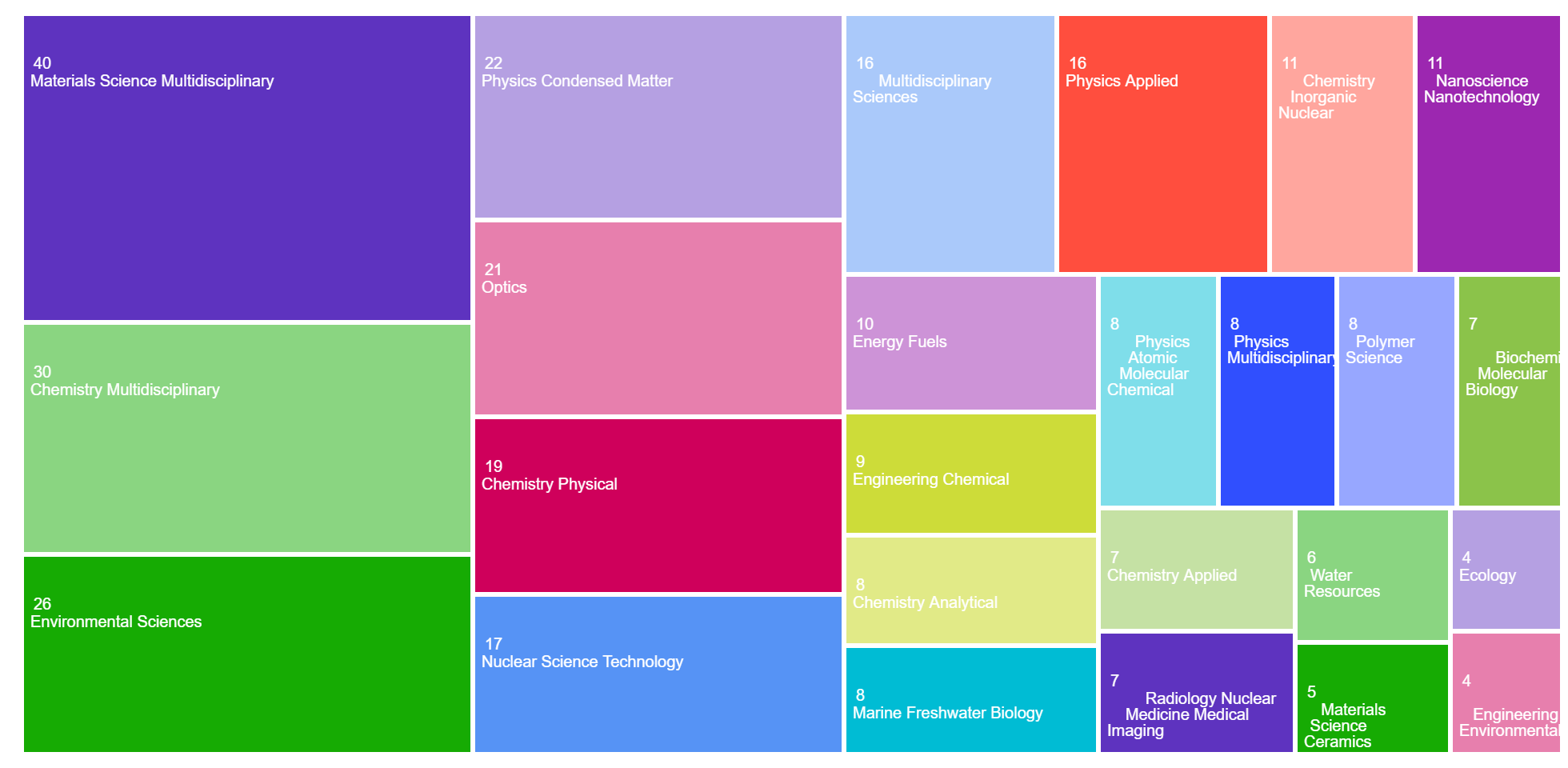
Significant contributions in the field include (leading 25):
Types of published documents:
| Types | Record Count | % of 219 |
|---|---|---|
| Article | 208 | 94.977% |
| Early Access | 14 | 6.393% |
| Review Article | 8 | 3.653% |
| Correction | 2 | 0.913% |
| Meeting Abstract | 1 | 0.457% |
Authors’ infographic (25):
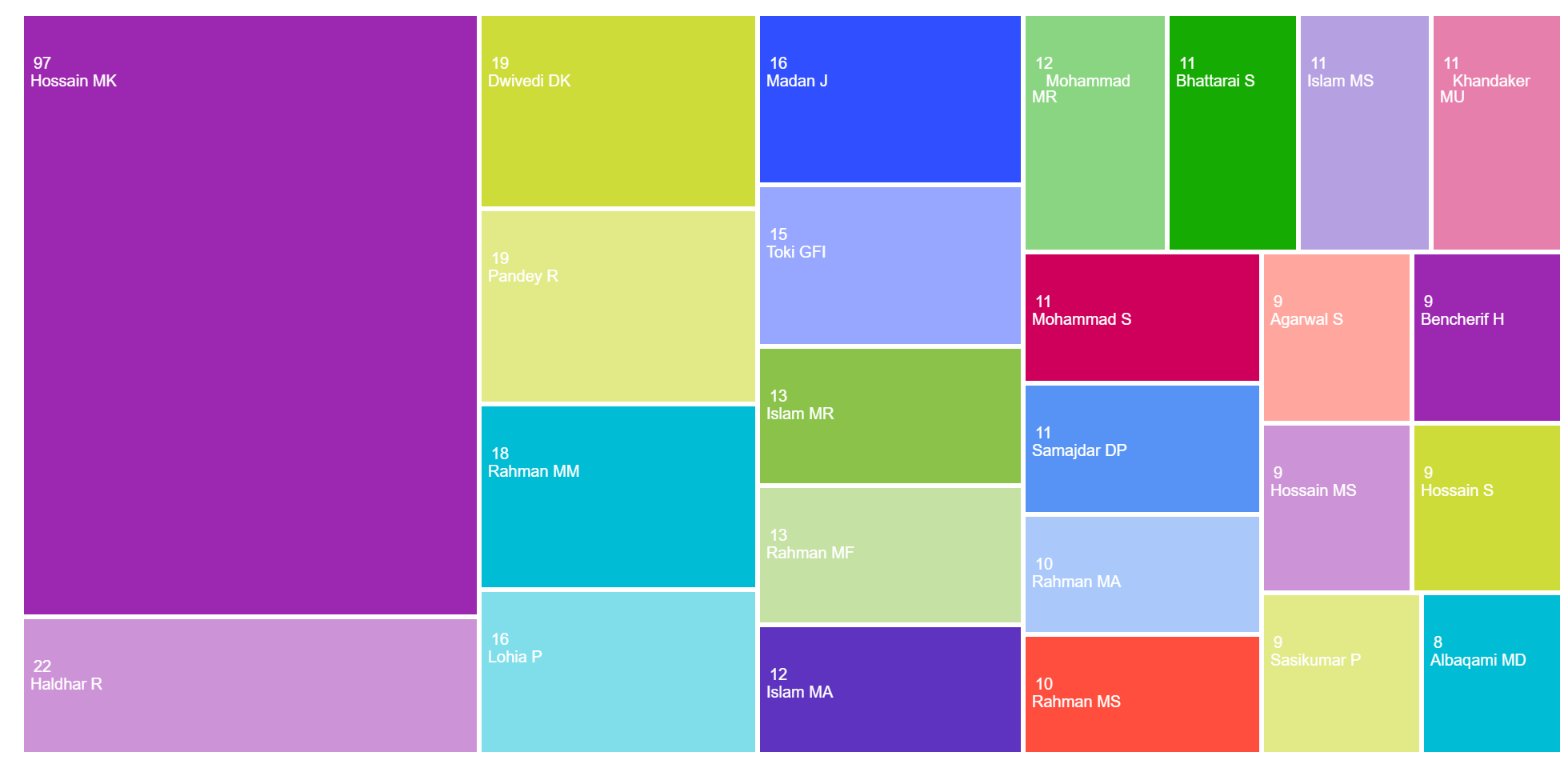
Researcher profiles (25):
| Researcher | Record Count | % of 219 |
|---|---|---|
| Hossain, M. Khalid | 96 | 43.836% |
| Haldhar, Rajesh | 22 | 10.046% |
| Pandey, Rahul | 19 | 8.676% |
| Lohia, Pooja | 16 | 7.306% |
| TOKI, GAZI FARHAN ISHRAQUE | 15 | 6.849% |
| Dwivedi, D. K. | 14 | 6.393% |
| Madan, Jaya | 13 | 5.936% |
| Rahman, Md. Ferdous | 12 | 5.479% |
| Bhattarai, Sagar | 11 | 5.023% |
| Mohammad, Saikh | 11 | 5.023% |
| Mohammad, M. R. | 11 | 5.023% |
| Khandaker, Mayeen Uddin | 11 | 5.023% |
| Agarwal, Surbhi | 9 | 4.110% |
| Samajdar, Dip Prakash | 9 | 4.110% |
| Bencherif, H. | 9 | 4.110% |
| Albaqami, Munirah D | 8 | 3.653% |
| Darwish, Moustafa | 8 | 3.653% |
| Marasamy, Latha | 7 | 3.196% |
| Hoque, Sheikh Manjura | 7 | 3.196% |
| Choudhury, Tasrina Rabia | 7 | 3.196% |
| P, Sasikumar | 7 | 3.196% |
| Atique Ullah, A K M | 7 | 3.196% |
| Uddin, M Shihab | 7 | 3.196% |
| Shahatha, Sara H. | 7 | 3.196% |
| Manir, M. S. | 6 | 2.740% |
Research affiliations of BAEC with other universities and institutes:
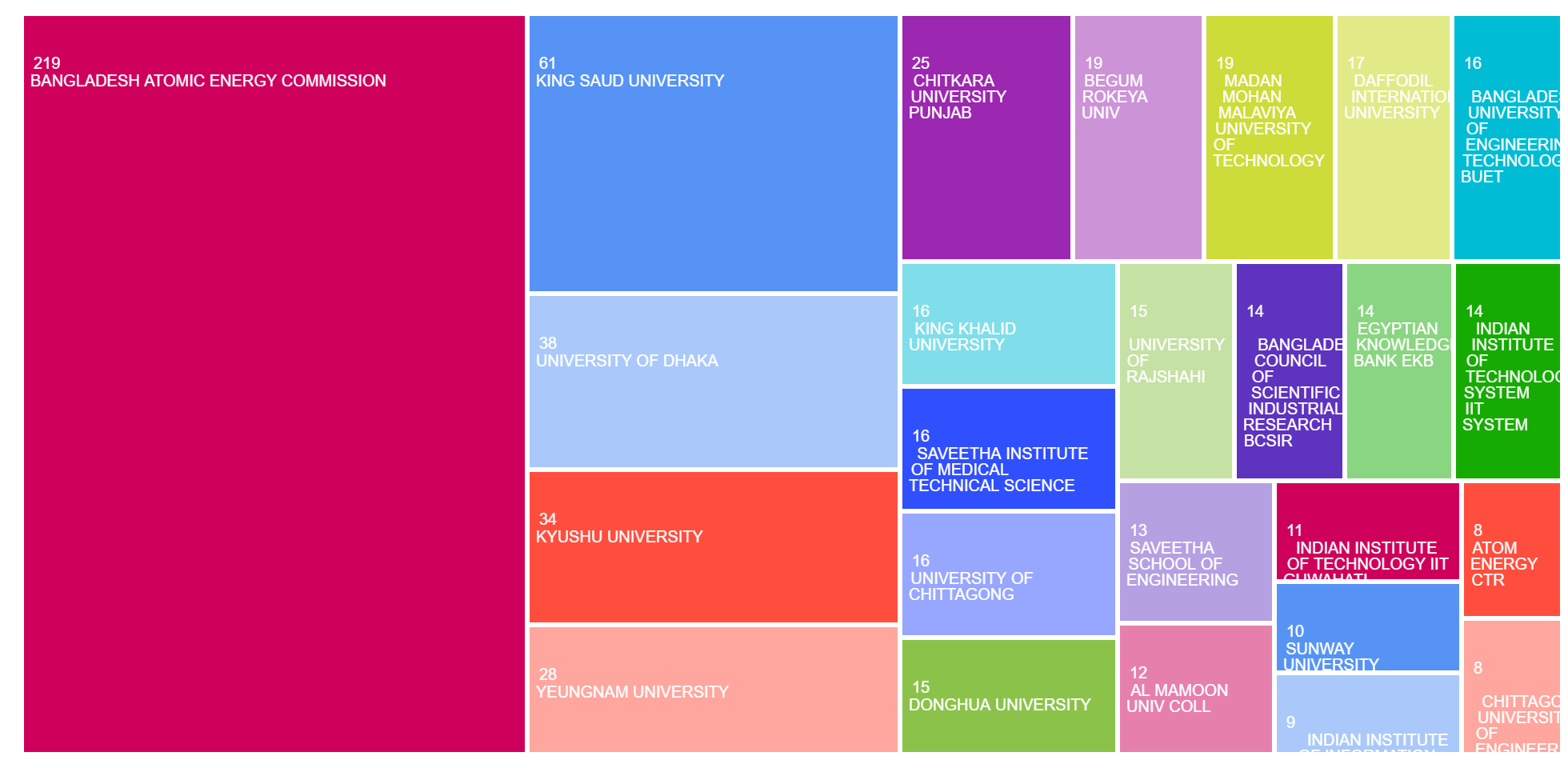
Research collaboration countries (Top 25):
-
Bangladesh – 219 (100.000%)
-
Saudi Arabia – 82 (37.443%)
-
India – 66 (30.137%)
-
Japan – 46 (21.005%)
-
South Korea – 41 (18.721%)
-
Peoples R China – 34 (15.525%)
-
USA – 27 (12.329%)
-
Malaysia – 19 (8.676%)
-
Iraq – 18 (8.219%)
-
Algeria – 15 (6.849%)
-
Egypt – 14 (6.393%)
-
Australia – 10 (4.566%)
-
Pakistan – 10 (4.566%)
-
Russia – 10 (4.566%)
-
Mexico – 9 (4.110%)
-
Belarus – 6 (2.740%)
-
Nigeria – 6 (2.740%)
-
Thailand – 6 (2.740%)
-
Italy – 5 (2.283%)
-
Brunei – 4 (1.826%)
-
England – 4 (1.826%)
-
Canada – 3 (1.370%)
-
Indonesia – 3 (1.370%)
-
Jordan – 3 (1.370%)
-
Sweden – 3 (1.370%)
Sustainable development goals:
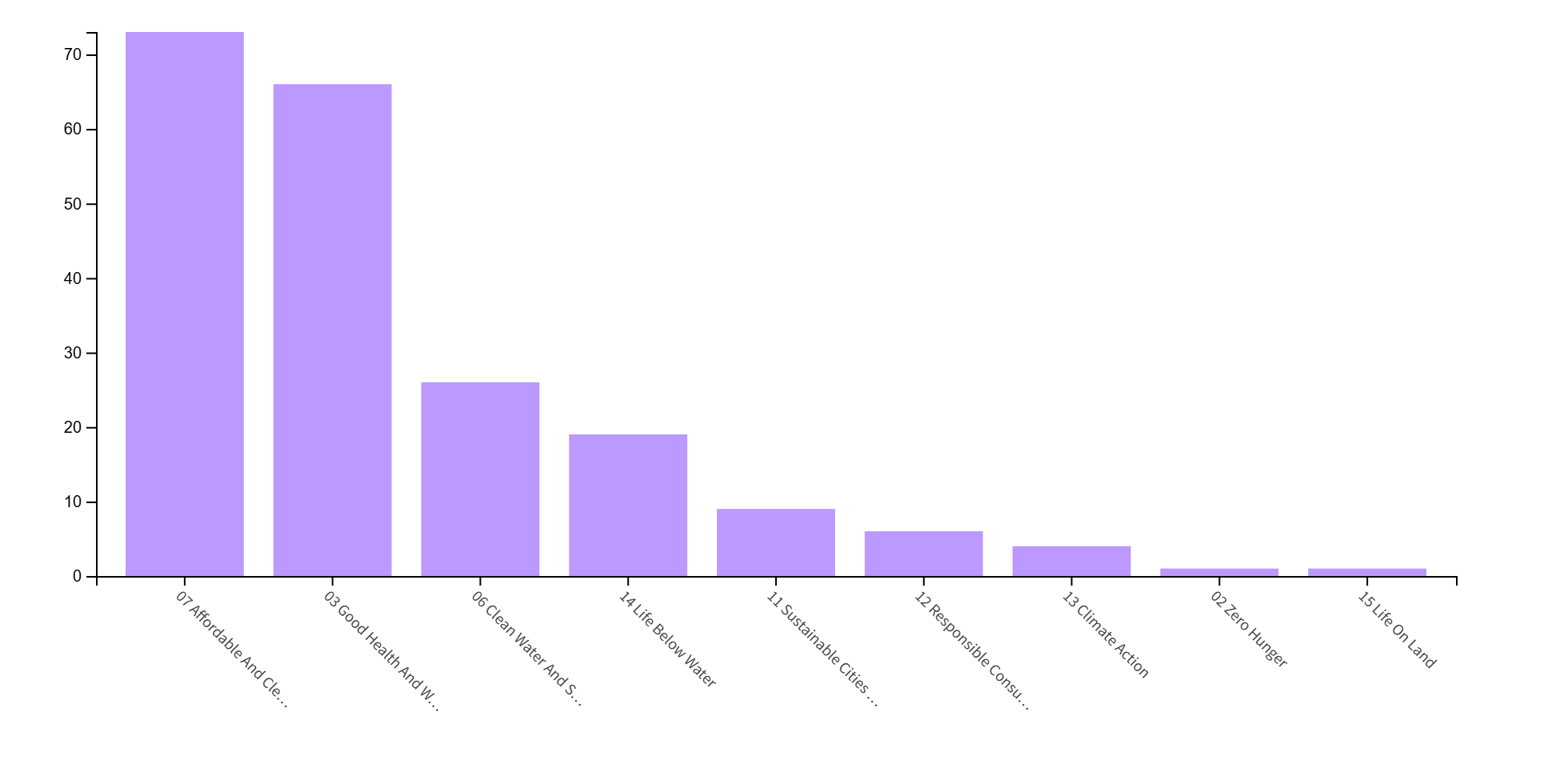
The publishers:
Web of Science Index:
| Index | Record Count | % of 219 |
|---|---|---|
| Science Citation Index Expanded (SCI-EXPANDED) | 185 | 84.475% |
| Emerging Sources Citation Index (ESCI) | 34 | 15.525% |
| Conference Proceedings Citation Index – Science (CPCI-S) | 1 | 0.457% |
Funding Agencies:

Research Highlights of BAEC:
| Type | Result |
|---|---|
| Review Article | 8 |
| Early Access | 14 |
| Open Access | 68 |
| Enriched Cited References | 135 |
| Open publisher-invited reviews | 3 |
Observations:
-
The overwhelming majority of documents were original research articles, indicating BAEC’s focus on generating new knowledge rather than summarizing existing ones.
-
A core group of researchers, particularly Hossain M. Khalid, is responsible for a significant proportion of the publications, hinting at highly productive individuals or teams.
-
International partnerships are deeply embedded in BAEC’s research strategy, with strong ties to multiple continents, showcasing Bangladesh’s rising global integration in science.
Questions:
-
What policies or support systems are enabling such high research output from specific individuals like Hossain M. Khalid?
-
How can BAEC expand participation across a broader pool of researchers to ensure more distributed productivity?
-
What specific contributions are being made toward the Sustainable Development Goals, and how are these being measured or tracked?
BAEC’s research portfolio in 2024 reflects not only scientific ambition but also strategic alignment with global trends and sustainability. With such a rich mix of disciplines and international networks, Bangladesh’s scientific community is not just contributing—it’s collaborating, leading, and setting new benchmarks.

